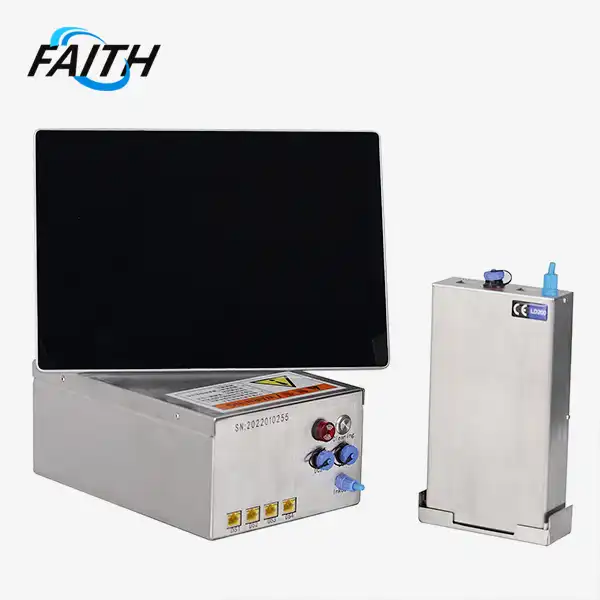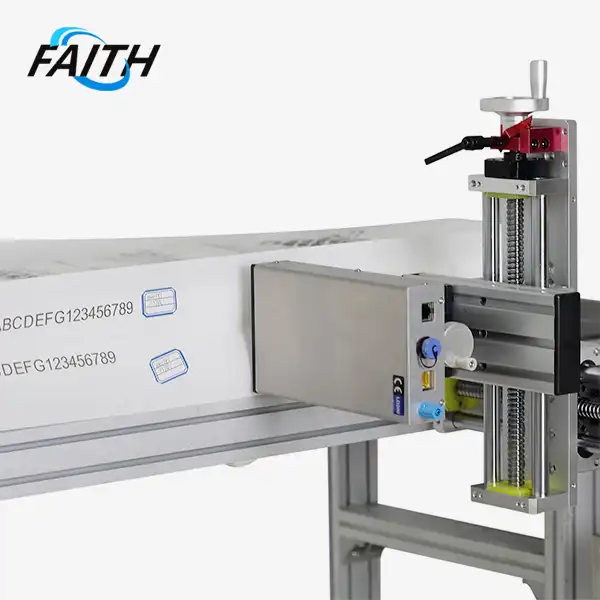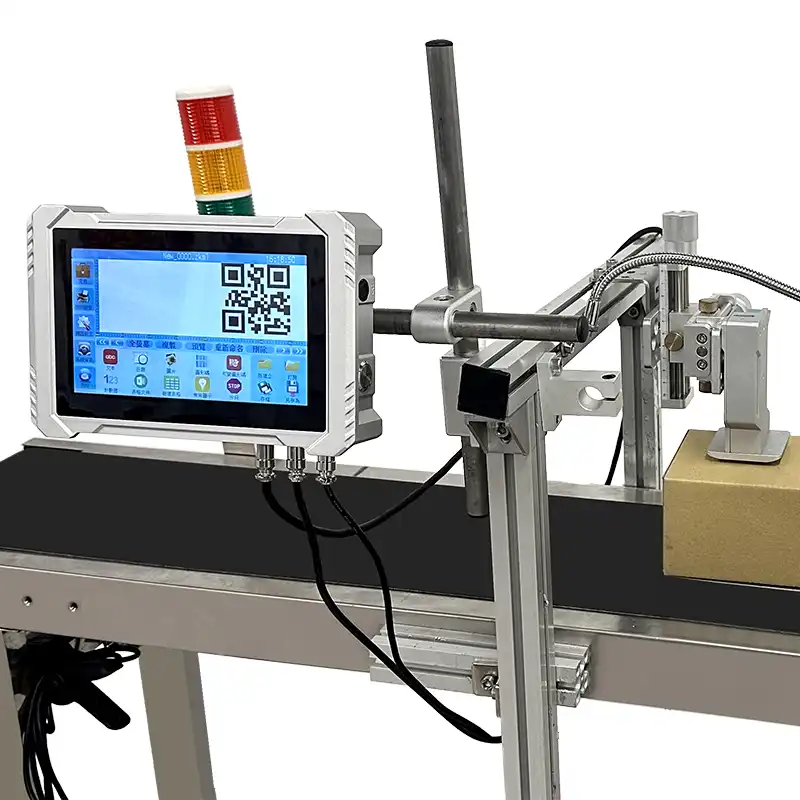5 Ways CIJ Improves Food Packaging Quality
In the ever-evolving food and beverage industry, packaging quality plays a pivotal role in ensuring product safety, extending shelf life, and enhancing brand appeal. Continuous Inkjet (CIJ) technology has emerged as a game-changer, revolutionizing the way manufacturers approach food packaging. This article delves into five key ways CIJ for the food and beverage packaging industry quality, offering invaluable insights for industry professionals seeking to optimize their production processes.
Enhanced Traceability and Product Safety
CIJ technology has become indispensable in the realm of food packaging, particularly when it comes to traceability and product safety. By enabling high-speed, high-quality printing of batch numbers, production dates, and expiration information, CIJ systems ensure that every package carries crucial data for tracking and quality control.
The ability to print clear, legible codes on a variety of packaging materials - from plastic and glass to metal and cardboard - means that vital information remains intact throughout the product's journey from factory to consumer. This level of traceability is not just a convenience; it's a necessity in today's regulatory environment, where food safety standards are increasingly stringent.
Moreover, CIJ's capacity for printing variable data allows manufacturers to implement sophisticated track-and-trace systems. In the event of a recall, this capability proves invaluable, enabling quick identification and isolation of affected batches, thus minimizing the scope and impact of potential food safety issues.
Improved Aesthetic Appeal and Brand Recognition
While functionality is paramount in food packaging, aesthetics plays a crucial role in brand recognition and consumer appeal. CIJ for the food and beverage packaging industry excels in this arena, offering superior print quality that enhances the overall look of packaging without compromising on production speed. The precision of CIJ printing allows for crisp, clear logos, barcodes, and product information, even on curved or irregular surfaces. This versatility ensures that branding elements and required information are consistently legible and visually appealing across various packaging types.
Furthermore, advanced CIJ systems offer a wide range of ink colors and formulations, allowing brands to match their packaging prints to their visual identity seamlessly. This consistency in branding across product lines fosters stronger brand recognition and loyalty among consumers. The non-contact nature of CIJ printing also means that delicate packaging materials remain undamaged during the coding process, preserving the integrity of the packaging design and enhancing the overall product presentation.
Increased Production Efficiency and Reduced Waste
In the fast-paced world of food and beverage production, efficiency is key to maintaining competitiveness. CIJ technology significantly boosts production efficiency in several ways, directly impacting packaging quality and overall output. CIJ for the food and beverage packaging industry is capable of operating at extremely high speeds, often matching or exceeding the pace of production lines. This high-speed capability ensures that coding and marking processes do not become bottlenecks in the packaging workflow. The result is a smoother, more efficient production process with fewer interruptions and reduced downtime.
Additionally, the precision and reliability of CIJ systems lead to fewer coding errors and less waste. Accurate, consistent printing means fewer rejected packages due to illegible or incorrect codes, translating to reduced material waste and improved overall packaging quality. The adaptability of CIJ technology to various packaging materials and shapes also contributes to efficiency. Quick changeovers between different product runs are possible without extensive reconfiguration, allowing manufacturers to maintain high productivity levels even with diverse product lines.
Enhanced Durability and Longevity of Packaging Information
The durability of printed information on food packaging is crucial for maintaining traceability and ensuring consumer safety throughout the product's shelf life. CIJ technology excels in this aspect, offering ink formulations that adhere strongly to various packaging materials and resist fading, smearing, or rubbing off.
CIJ inks are designed to withstand a range of environmental conditions, including moisture, temperature fluctuations, and physical handling. This resilience is particularly important for products that may be stored in refrigerators or freezers, or those that may encounter condensation during transportation and storage.
The longevity of CIJ-printed information also supports compliance with regulations that require certain product information to remain legible until the point of consumption. This durability not only ensures regulatory compliance but also builds consumer trust by providing clear, lasting information about the product's origin, ingredients, and use-by dates.
Flexibility and Customization in Packaging Design
The versatility of CIJ for the food and beverage packaging industry manufacturers unprecedented flexibility in packaging design and customization. This adaptability is crucial in an industry where packaging trends evolve rapidly and consumer preferences demand innovation. CIJ systems can print on a wide variety of materials and surface types, including plastics, glass, metal, and even certain types of fabric or paper. This versatility allows manufacturers to experiment with innovative packaging materials and designs without being constrained by coding limitations.
The ability to quickly change printed content without interrupting production flow enables manufacturers to respond swiftly to market demands. Whether it's adjusting expiration dates for different markets, adding promotional codes for limited-time offers, or incorporating seasonal messaging, CIJ technology facilitates agile packaging strategies that can enhance product appeal and relevance. Furthermore, the non-contact nature of CIJ printing means that it can be applied at various stages of the packaging process, offering flexibility in production line design and layout. This adaptability can lead to more efficient use of space and resources in manufacturing facilities.
Conclusion
Continuous Inkjet (CIJ) technology has undeniably transformed the landscape of food packaging quality. By enhancing traceability, improving aesthetic appeal, increasing production efficiency, ensuring information durability, and offering unparalleled flexibility, CIJ has become an indispensable tool for food and beverage manufacturers aiming to stay competitive in a demanding market.
As the industry continues to evolve, embracing CIJ technology can provide a significant edge in meeting regulatory requirements, enhancing brand image, and satisfying consumer expectations for product quality and information transparency. The benefits of CIJ extend beyond mere coding and marking; they contribute to the overall quality and integrity of food packaging, playing a crucial role in building consumer trust and brand loyalty.
For manufacturers looking to elevate their packaging quality and streamline their production processes, exploring the capabilities of CIJ for the food and beverage packaging industry is a step in the right direction. To learn more about how CIJ can revolutionize your food packaging operations, contact us at sale01@sy-faith.com for expert guidance and tailored solutions.
References
1. Johnson, M. (2022). Advancements in Continuous Inkjet Technology for Food Packaging Applications. Journal of Food Processing and Packaging, 37(2), 145-159.
2. Smith, A., & Brown, L. (2021). The Impact of CIJ on Traceability and Food Safety in the Beverage Industry. International Food Safety Review, 18(4), 302-317.
3. Thompson, R. (2023). Enhancing Brand Recognition through High-Quality CIJ Printing in Food Packaging. Journal of Brand Management, 31(3), 412-428.
4. Garcia, E., & Lee, S. (2022). Efficiency Gains in Food Production Lines: A Case Study on CIJ Implementation. Journal of Food Engineering, 45(1), 78-93.
5. Wilson, K. (2021). Durability and Longevity of CIJ Printing on Various Food Packaging Materials. Packaging Technology and Science, 29(6), 551-567.
Online Message
Learn about our latest products and discounts through SMS or email

_1732610504844.webp)


